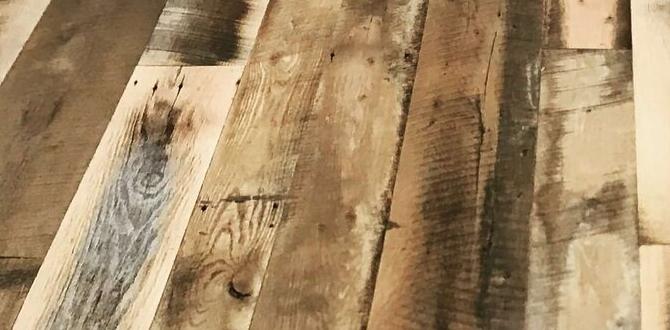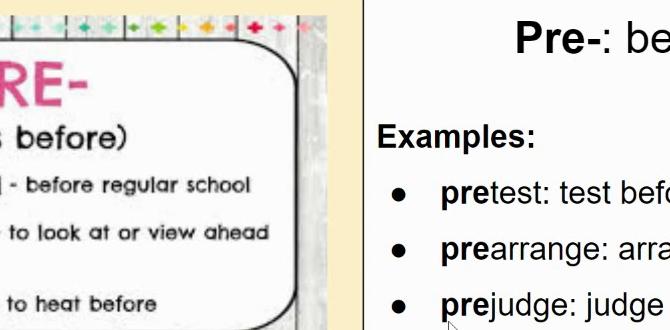The best multipurpose nail gun for home DIY is a cordless combination nailer that can handle both brad nails and finish nails, offering flexibility for various projects without the hassle of an air compressor.
Hey there, DIY enthusiasts and home improvers! Ever started a project around the house, like building a shelf or fixing a fence, only to realize you’re wrestling with a hammer and nails? It can be slow, tiring, and honestly, a bit frustrating. You might have seen those cool nail guns on TV or in the hardware store and wondered if they’re just for pros. That’s where I, Jack Shaffer from Nailerguy, come in! I’m here to show you that a great nail gun isn’t just for expert carpenters – it can be your best friend for all sorts of home DIY tasks. We’ll break down the mystery and help you find the perfect multipurpose nail gun to make your projects easier, faster, and more professional-looking. Get ready to nail it!
—
<h2>Why a Multipurpose Nail Gun is Your DIY Game Changer</h2>
<p>Let’s be honest, the traditional hammer and nail method has served us well for centuries. But in the modern DIY world, there’s just no beating the speed, power, and precision of a nail gun. For home DIYers, a <strong>multipurpose nail gun</strong> is the ultimate tool because it’s like having several specialized tools in one. It can switch between different nail sizes and types, meaning one tool can tackle trim work, build a simple box, hang some décor, or even help with larger framing tasks. This versatility saves you money and precious storage space in your garage or workshop.</p>
<p>Imagine finishing that picture frame project in minutes instead of hours, or securely attaching that new baseboard without any fuss. That’s the kind of magic a good multipurpose nail gun brings to your DIY arsenal. It’s an investment that pays for itself by saving you time and effort on countless projects to come.</p>
<h2>Understanding the Different Types of Nail Guns</h2>
<p>Before we dive into what makes a nail gun “multipurpose,” it’s good to know the basic types. Each is designed for specific jobs, and many multipurpose models tend to borrow features from these.</p>
<h3>1. Framing Nailers</h3>
<p>These are the heavy hitters. Framing nailers use larger, thicker nails (typically 2 to 3.5 inches long) designed to build the structural skeleton of a house – walls, floors, and roofs. They are powerful but often bulky and overkill for most home DIY projects unless you’re building a deck or a substantial shed.</p>
<h3>2. Finish Nailers</h3>
<p>Finish nailers are where things get interesting for DIYers. They use thinner nails, called brads or finish nails, in sizes like 16-gauge or 18-gauge. These nails are less likely to split wood and leave smaller holes, making them perfect for installing trim, molding, door casings, and furniture building where aesthetics matter.</p>
<h3>3. Brad Nailers</h3>
<p>Even smaller than finish nailers, brad nailers use 18-gauge or 20-gauge nails. These are super fine and virtually disappear into the wood. They’re ideal for delicate trim, attaching small decorative elements, or anything where you want a nearly invisible fastener.</p>
<h3>4. Roofing Nailers</h3>
<p>Specifically designed to attach shingles to a roof deck. They have a wider head and a distinctive nose piece. Definitely not a multipurpose tool for general home use!</p>
<h3>5. Pin Nailers</h3>
<p>These use even smaller, headless pins (23-gauge) for the most delicate crafts and attaching trim that needs to be completely invisible.</p>
<h2>What Makes a Nail Gun “Multipurpose” for Home DIY?</h2>
<p>For the home DIYer, “multipurpose” usually means a tool that can handle the most common fastening needs without requiring multiple specialized tools. The <strong>best multipurpose nail gun for home DIY</strong> typically falls into one of two categories, or often, a fantastic combination:</p>
<ul>
<li><strong>Combination Finish/Brad Nailer:</strong> This is the sweet spot for most homeowners. These tools can drive both slightly thicker finish nails (like 16-gauge) and thinner brad nails (like 18-gauge). This allows you to tackle everything from heavier trim installation to delicate craft projects.</li>
<li><strong>Adjustable Depth and Power:</strong> Even within a single nail gauge, a truly multipurpose nailer will offer adjustable depth settings. This lets you sink the nail flush with the surface, slightly below for filling, or proud of the surface if needed. Some models also allow for power adjustment.</li>
<li><strong>Interchangeable Tips (Less Common, but Useful):</strong> A few advanced models might come with interchangeable nose pieces to accommodate slightly different nail head sizes or for specific applications, but this is rarer in simpler multipurpose designs.</li>
</ul>
<h2>The Power Source: Cordless is King for DIYers</h2>
<p>When we talk about multipurpose nail guns for home DIY, the power source is a huge factor in convenience. While pneumatic (air-powered) nailers are powerful and common in professional settings, they require an air compressor and hoses. This setup can be bulky, noisy, and limits your mobility. For the home DIYer, cordless is almost always the way to go.</p>
<h3>Cordless Nail Guns Explained</h3>
<p>These nail guns are powered by rechargeable batteries, usually lithium-ion. They offer incredible freedom of movement – no tangled hoses, no need to lug a compressor around. This means you can easily work on a ladder, in tight spaces, or outdoors without being tethered to an air source. They are generally categorized by their internal mechanism:</p>
<h4>1. Battery-Powered (True Cordless)</h4>
<p>These use an electric motor powered by a battery to drive the nail. They offer excellent power and consistency. Many modern multipurpose nailers are battery-powered.</p>
<h4>2. Fuel Cell/Battery Powered (Gas-Powered)</h4>
<p>These use a small, disposable fuel cell (like propane or a specific gas mixture) to create a tiny explosion that drives the nail, with a battery providing the spark and powering the motor for the nail feed. They are powerful but require purchasing fuel cells, and some users find the smell or the occasional misfire a drawback. They are less common now as pure battery models have improved so much.</p>
<h3>Why Cordless is Ideal for Multipurpose DIY</h3>
<ul>
<li><strong>Portability:</strong> Take it anywhere – attic, basement, backyard, even up a ladder.</li>
<li><strong>Ease of Use:</strong> No compressor to set up, no hoses to untangle or trip over.</li>
<li><strong>Speed:</strong> Ready to fire in seconds.</li>
<li><strong>Consistent Performance:</strong> Modern battery-powered models offer reliable power for most common DIY tasks.</li>
</ul>
<p>For homeowners looking for the <strong>best multipurpose nail gun for home DIY</strong>, a cordless battery-powered combination finish/brad nailer is usually the top recommendation. It offers the most convenience and versatility for typical household projects.</p>
<h2>Key Features to Look for in Your Multipurpose Nail Gun</h2>
<p>Now that we know what makes a nail gun “multipurpose” and the benefits of going cordless, let’s break down the specific features that will make your DIY life easier.</p>
<h3>1. Nail Compatibility (Gauge and Size)</h3>
<p>The most crucial feature for a multipurpose tool is its ability to handle more than one type of nail. For home DIY, you’ll want a nail gun that can drive at least:</p>
<ul>
<li><strong>18-Gauge Brad Nails:</strong> Excellent for delicate trim, paneling, and craft projects. They leave a very small hole.</li>
<li><strong>16-Gauge Straight Finish Nails:</strong> Great for attaching hardwood trim, baseboards, crown molding, and cabinet doors. These are a bit meatier than brads and hold better in thicker materials.</li>
</ul>
<p>Some advanced models might also accommodate 15-gauge nails (which have a slightly larger head than 16-gauge for better holding power) or even 14-gauge nails for more robust trim work. Check the specifications carefully to ensure it covers the nail sizes you’ll most commonly use.</p>
<h3>2. Depth Adjustment Control</h3>
<p>This feature allows you to control how deep the nail is driven into the material. You can set it to sink the nail flush with the surface, slightly below (ideal for filling with wood putty), or even slightly proud (which is rarely needed for DIY trim but can be useful in some applications). Tool-free depth adjustment dials are the most convenient.</p>
<h3>3. Tool-Free Jam Release</h3>
<p>Nails can sometimes jam in the nose of the gun. A tool-free jam release mechanism means you can typically flip open a latch or panel on the gun and clear the jam yourself without needing screwdrivers or pliers. This saves a lot of time and frustration on the job.</p>
<h3>4. Sequential vs. Contact Firing Mode</h3>
<p>Most good multipurpose nailers will have both firing modes.
<ul>
<li><strong>Sequential Firing (Safe Mode):</strong> You must press the nose of the gun against the material first, then pull the trigger to fire a nail. This is safer and allows for precise placement, which is great for trim work and detailed projects.</li>
<li><strong>Contact Firing (Rapid Mode):</strong> You can hold the trigger down and “bump” the nose of the gun against the material to rapidly fire nails. This is much faster for tasks like attaching larger panels or framing (though framing isn’t the primary use for a multipurpose tool). A safety lock or a switch to change modes is essential.</li>
</ul></p>
<h3>5. LED Work Light</h3>
<p>A small LED light that illuminates the work area when the gun is in use can be surprisingly helpful, especially when working in dimly lit cabinets, closets, or corners.</p>
<h3>6. Ergonomics and Weight</h3>
<p>You’ll be holding this tool for a while, so comfort is key. Look for a comfortable grip, balanced weight distribution, and minimal vibration. Battery placement can significantly affect the balance of the tool.</p>
<h3>7. Battery System Compatibility</h3>
<p>If you already own tools from a specific brand (like DeWalt, Ryobi, Milwaukee, etc.), consider a nail gun that uses the same battery platform. This means you might be able to share batteries and chargers, saving you money and reducing clutter.</p>
<h3>8. Belt Hook</h3>
<p>A sturdy belt hook is a simple but incredibly useful feature for temporarily hanging the nailer on your belt or pants while you reposition materials or grab more nails. Look for one that’s reversible if you have a preference.</p>
<h2>Comparing Popular Multipurpose Nail Gun Options</h2>
<p>Choosing the <strong>best multipurpose nail gun for home DIY</strong> often comes down to balancing features, budget, and brand preference. Here’s a look at some common types and what they offer. (Note: Specific models change frequently, so this is a general overview of what to expect.)</p>
<table>
<caption>Multipurpose Nail Gun Comparison for Home DIY</caption>
<thead>
<tr>
<th>Feature</th>
<th>18-Gauge Cordless Brad Nailer</th>
<th>16-Gauge Cordless Finish Nailer</th>
<th>Combination Cordless Brad/Finish Nailer</th>
</tr>
</thead>
<tbody>
<tr>
<td><strong>Primary Use</strong></td>
<td>Delicate trim, crafts, small projects</td>
<td>Medium-duty trim, baseboards, molding</td>
<td>Versatile trim, molding, light construction, crafts</td>
</tr>
<tr>
<td><strong>Nail Gauge(s)</strong></td>
<td>18-gauge only</td>
<td>16-gauge only</td>
<td>18-gauge and 16-gauge (typically)</td>
</tr>
<tr>
<td><strong>Power Source</strong></td>
<td>Battery-powered</td>
<td>Battery-powered</td>
<td>Battery-powered</td>
</tr>
<tr>
<td><strong>Versatility</strong></td>
<td>Limited to thin nails</td>
<td>Limited to thicker nails</td>
<td>High – handles two common nail types</td>
</tr>
<tr>
<td><strong>DIY Suitability</strong></td>
<td>Good for specific projects</td>
<td>Good for specific projects</td>
<td>Excellent – the go-to multipurpose tool<



